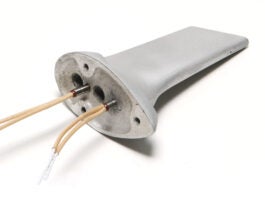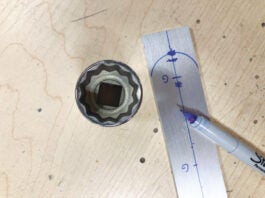The Home Machinist
Using a real computer-assisted design (CAD) program to design your panel has multiple benefits.
Aero ‘lectrics
Jim Weir continues the project he started last month as he attempts to bring a little intermittence to a homemade tone generator so that it will go beep, beep instead of one long beeeeeeeeep when alerting you to an out-of-norm condition.
The Home Machinist
How do you turn out non-cylindrical objects with your lathe? Why, by using a four-jaw chuck, of course. And there's a way to effectively employ that 'ole' adjustable wrench that might have escaped you for years; by Bob Fritz.
Aero ‘lectrics
Columnist Jim Weir sounds off on an all-purpose beeper that will work for most anything you want to call attention to in the cockpit.
The Home Machinist
This months feature offers a three-in-one discussion that includes how to use the steady rest to work with any material that extends beyond the chuck, a review of Googles SketchUp program that will allow you to get designing on your home computer quickly, and notes on how to make an indispensable tool for the home machinist; by Bob Fritz.
Aero ‘lectrics
Columnist Jim Weir has completed his solar-powered battery charger, and it works! It may not be the fastest charger, but it is certainly up to the task of keeping a battery topped off, even in winter.
The Home Machinist
Taking that first cut into the sheet metal of an aircraft panel can be daunting, and being as precise as youd like is even more so. Author Bob Fritz eases your anxiety about the process with some tips about how to use the right tool for the right job, so that the hole you get is the one you wanted.
Aero ‘lectrics
This month, author Jim Weir lays the groundwork for a solar battery charger, complete with preliminary circuit board considerations drawn from a rats nest and details about how to order a pre-fabricated board.
The Home Machinist (Part 11)
In our continuing series, author Bob Fritz explains how to use a boring head to drill odd-size or big holes. Hint 1: The bigger the hole, the slower the going. Hint 2: The traveling rest, which moves with the cutting tool, braces the material in two directions to minimize flexing.













